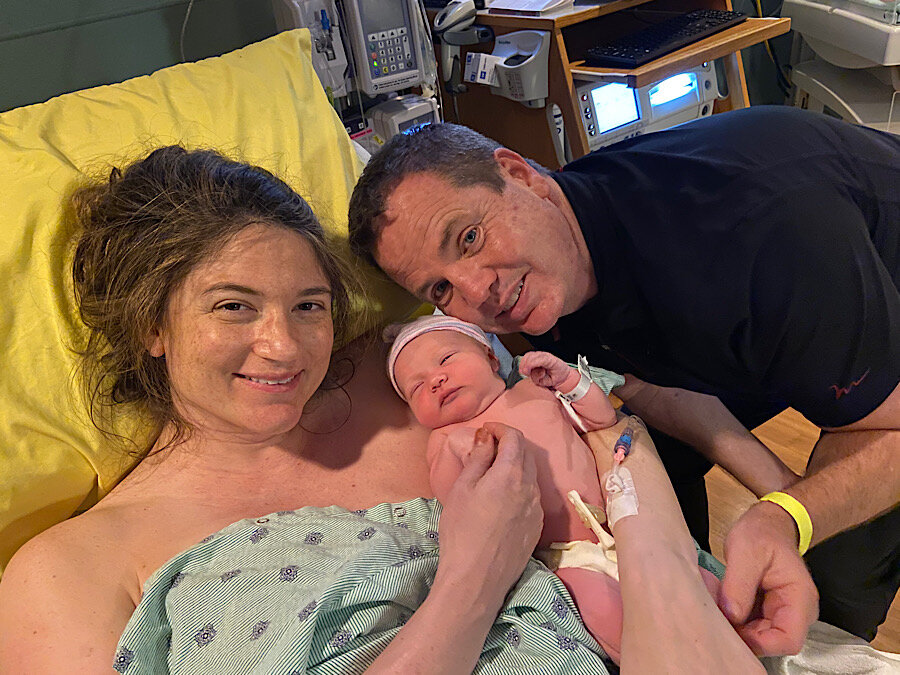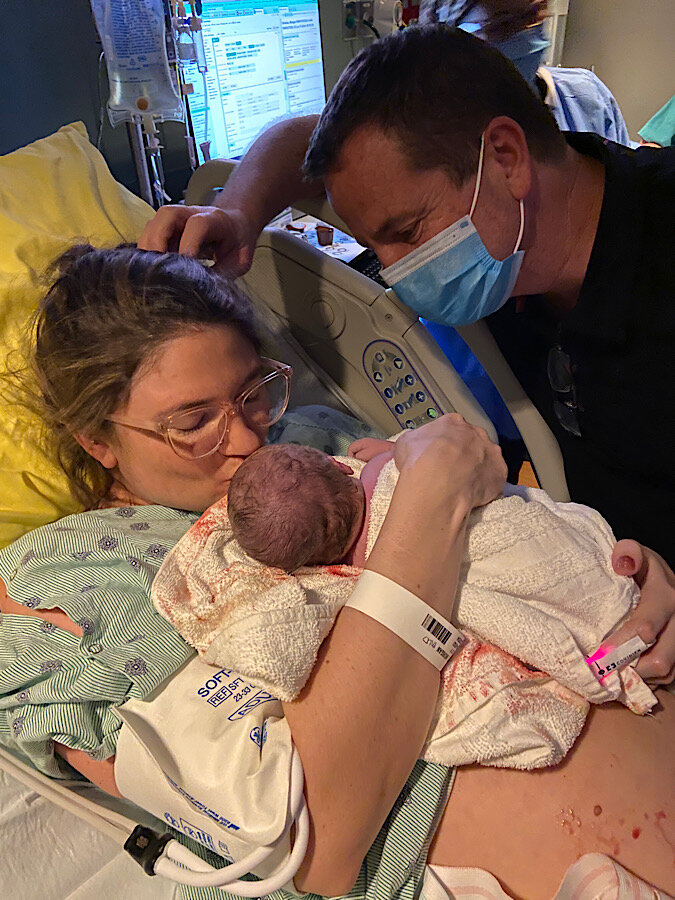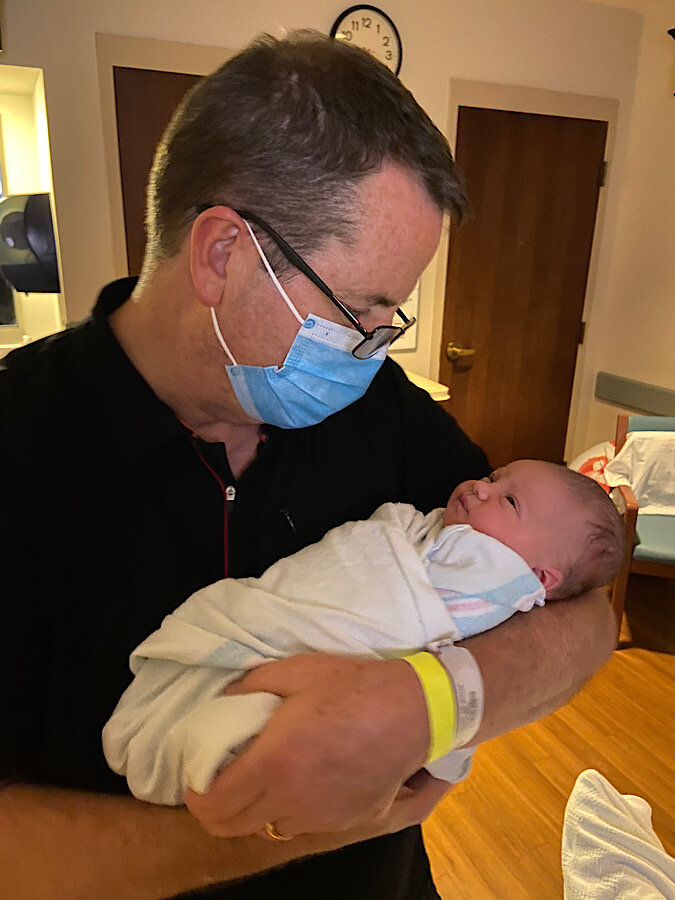Christina and Brian met their sweet baby girl, Gianna May (Gia) on May 6, 2021. It was a love-filled labor and birth and I wasn’t surprised in the least. The first time I met them over a virtual interview, I could feel their love. This was a baby wanted and desired for a long time and through the gift of IVF they were finally expecting. We were excited for the day they would welcome their baby for it would be the closing of a chapter and the first page of an incredibly different one.
Christina reached out at 8:00 am on May 5 to tell me about the contractions that had been keeping her up since 4:00 am. They were surprisingly painful which threw her off since things had only just begun. She had a hard time keeping anything down, even water, so after several hours she called the midwife to see about going in to get fluids.
She was dilated 5-6 cm upon arrival which was quite remarkable, but she was also dehydrated. The fluid would help her uterus and hopefully give her a little boost as well. She was shown to her room after admission and once she got through the initial questions and procedures, she decided on an epidural and that along with some Zofran helped with her comfort and rest immensely. She was well on her way to rest around 5:00 that evening. And she was dilated 6 ½ cm and 100% effaced too.
We rotated Christina into a variety of positions. There was a pesky window of pain that was managed with position changes and the PCA button. But the only true relief would be delivery. Christina was grateful for the relief the epidural provided, even if it wasn’t 100%. The midwife came in around 7:00 pm and confirmed on exam that Christina was dilated to 9 ½ cm! It wouldn’t be long, or so we thought. She tried to rest but it was hard to sleep when you are excited to meet your baby!
The position changes continued and we all waited for Christina to feel the landmark “pressure in her bottom” that would signal full dilation and descent and a reasonable time to start pushing. She developed some signs of transition that were actually a low grade fever. But that lip of cervix while reducible, persisted. Her doctor preferred not to mess with it and rather let nature run its course. So Christina continued to rest and we continued to rotate her into various side-lying positions using a peanut ball and stirrups, and the runners position. At 11:30 pm the lip was still there and since it had been several hours at that point, the doctor recommended a little bit of pitocin in the hopes the contractions would move baby’s head against the cervix and melt it away.
Her baby’s heart rate dipped, but it was always manageable and partially due to the head compression that signaled it would soon be time to push. And just prior to 2:00 am, Christina’s cervix was fully dilated. Pushing began around 2:15 am and because her baby was already so low (she had been at +2 station for hours), we saw hair almost immediately! The doctor joined us thirty minutes later and Christina even reached down and felt her baby’s head herself at 2:52 am. And that touch inspired some great pushes because the nursery staff was called in for delivery with the next push!
Christina managed to allow her baby’s head to crown gradually in spite of the epidural, and her patient doctor applied oil and counter pressure to encourage everything to stretch. And the diligence and patience paid off because Gia was born at 3:13 am! Christina and Brian cried at the sight of their daughter and she was gripping her daddy’s finger within minutes. Although I think Brian was the one wrapped around her finger in that moment!
Christina and Brian immediately searched for family resemblances in their daughter’s features and fell in love with every bit of her. Christina propped her baby girl on her legs and marveled at her, really taking her in. Daddy got some skin-to-skin time too and eventually the official stats were recorded: 7 lb. 7.8 oz. and 20 in. long. Yes, Gia was perfect.
This birth was encircled in such love. The way Christina and Brian care for each other is evident, and labor was such a beautiful picture of that. And their love for Gia is inspiring and I couldn’t help but be touched by their gratefulness of finally holding their baby in their arms. Their birth and their path to become pregnant, was an example of patience, something that is a good reminder for those of us working in birth. I’m so glad their providers were patient as well.













